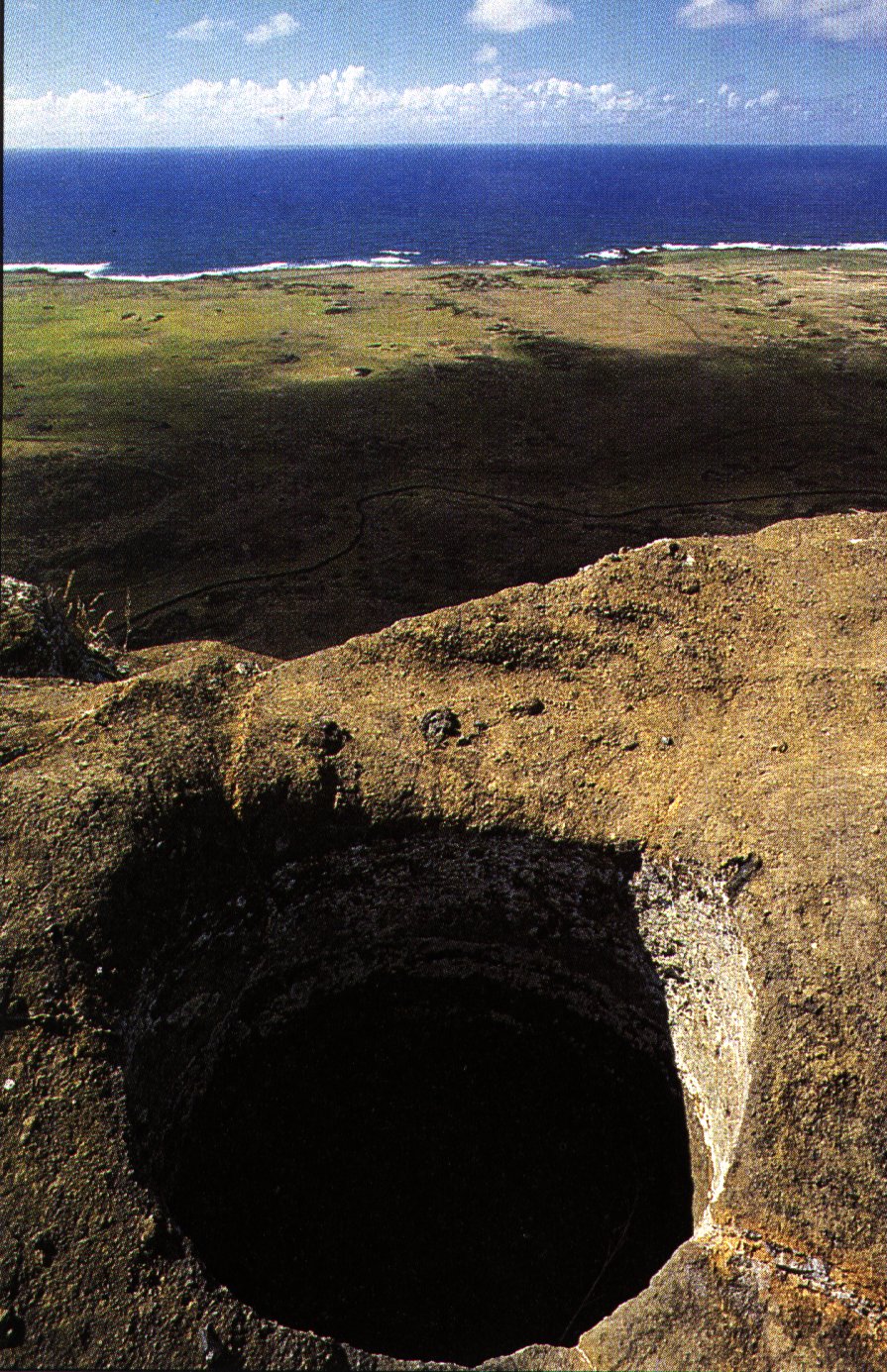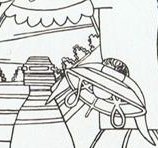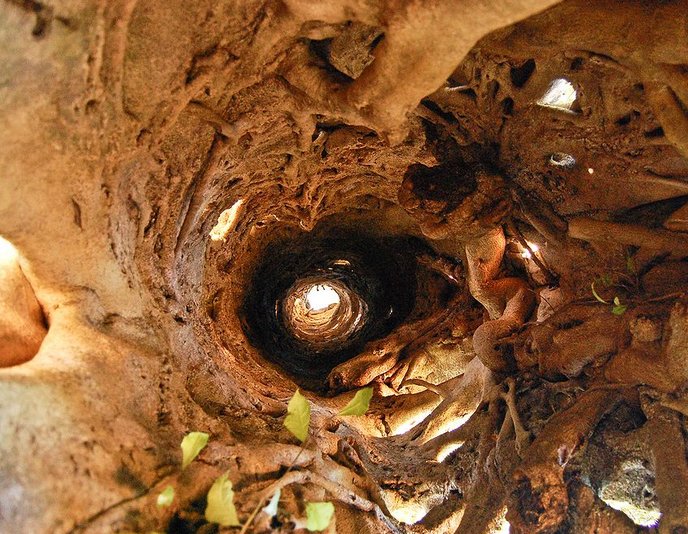There were no banyan trees on Easter Island. In fact the island had hardly any remaining trees at all. Once, though, there were trees. The Chilean palm tree, for instance, had been growing also on Easter Island and their stems had left holes in the volcanic ground: 
(Picture copied from
Heyerdahl.)
Could such a petrified hole from an ancient palm tree be the idea behind mauga pu (mountain hole)?
Yes, because the great banyan was a strangler fig incorporating first another tree and then only its hole:
"In a banyan that envelops a support tree the mesh of roots growing round the support tree eventually applies very considerable pressure and commonly kills the tree. Such an enveloped dead tree eventually rots away so that the banyan becomes a 'columnar tree' with a hollow central core. In jungles such hollows are particularly desirable shelters to many animals." (Wikipedia) North of the equator the Great Tree had a hole inside. South of the equator, at least on Easter Island, it was the opposite - the hole (È) was ruling over a 'vanquished banyan'. The banyan was also associated with shadows: "The name was originally given to F. benghalensis and comes from India where early travellers observed that the shade of the tree was frequented by banias or Indian traders. In the Gujarati language, banya means 'grocer/merchant', not 'tree'. The Portuguese picked up the word to refer specifically to Hindu merchants and passed it along to the English as early as 1599 with the same meaning. By 1634, English writers began to tell of the banyan tree, a tree under which Hindu merchants would conduct their business. The tree provided a shaded place for a village meeting or for merchants to sell their goods. Eventually 'banyan' became the name of the tree itself." (Wikipedia) The proper kind of tree generates shadows and shelter from enemies. Once and early when I wondered what the mauga type of glyph might illustrate, I was struck by the similarity with the way trees (nehet, with a female indicator '-t' at the end of the word) were depicted in ancient Egypt:
Above are the enemies of Pharaoh hiding among trees, in a relief from the Amon Temple of Karnak illustrating the Syrian enemies of Pharaoh Seti I.
Several ideas flow together here. A great old man is like a mountain (mouga) when he is near to his end (mouga). If this old man should be a divine king (ariki), then he may have been compared to a banyan - a great tree with many descendants and with a hole in his center. In the Tahitian dialect he could have been named a mauga pu. On Easter Island he would have been a mouga pu, but Metoro read Tahitian for Bishop Jaussen. And then we should not forget how a defeated king once hid himself in a tree: ... Robur Carolinum, Charles' Oak, the Quercia of Italy and the Karlseiche of Germany, was formally published by Halley in 1679 in commemoration of the Royal Oak of his patron, Charles II, in which the king had lain hidden for twenty-four hours after his defeat by Cromwell in the battle of Worcester, on the 3rd of September 1651 ... "This invention secured for Halley his master's degree from Oxford, in 1678, by the king's express command. But La Caille complained that the construction of the figure, from some of the finest stars in the Ship, ruined that already incomplete constellation, 'and the Oak ceases to flourish after half a century of possession', although Bode sought to restore it, and Burritt incorporated it into his maps, assigning to it twenty-five stars. Halley's 2d-magnitude α Roburis was changed to β Argūs [Miaplacidus], now in Carina." (Allen) Evidently the heliacal rising of Miaplacidus (α Roburis) could have inspired the quartet of glyhs beyond Ca5-31:
531 (Ca5-31) = 18 * 29½ and the disc of Sun is hidden in Ca5-33--34.
Time runs from left to right according to Hevelius and the prow of his Ship has reached land. From Miaplacidus (β) to the end (mauga) of Carina at ω (Simiram) there were 154.7 - 139.3 = 15.4 days, but to the 'break' at Vathorz Posterior (θ, though υ in the map below) there were 162.1 - 139.3 = 22.8 days:
The form of the prow of the Ship can be imagined as the stem of a broken Tree. There are 242 glyphs on side b of the G tablet and day 242 was when Vathorz Posterior rose with the Sun:
Metoro's marama kua tuu i te kihikihi could refer to the month (marama) when the Old Fire has been reduced to ashes (te kihikihi). The 'head' is no longer there, no longer visible, and only his head gear is left:  The 'broken bamboo stem' (hatiga te koe) is like a single great and horizontally oriented sign which maybe should be contrasted with those 400 smaller and vertically oriented 'nights' on the back side of Pachamama:
| ||||||||||||||||||||||||||||||||||||||||||||||||||||||||||||||||||||||||||||





.jpg)



